ZUCCHINI RELISH
INGREDIENTS:
12 cups grated raw zucchini squash
1/2 teaspoon pepper
1/4 teaspoon nutmeg
3/4 teaspoon turmeric
2 large red or green bell peppers finely chopped
5 tablespoons salt
1 1/2 teaspoon celery seed
2 1/2 cups apple vinegar
5 cups sugar
1/4 cup cornstarch, more or less
4 cups grated onion
Mix grated zucchini squash and bell peppers. Cover with salt. Let set all
night. Next day drain and rinse a couple times. Mix sugar, cornstarch and spices.
Pour in vinegar and stir well. Cook until thickens. Add other
ingredients. Cook over medium to low heat for about 30 minutes. Put
in hot jars. This recipe is a labor intensive and pricy but well worth
the effort.YIELD: About 8 pints.
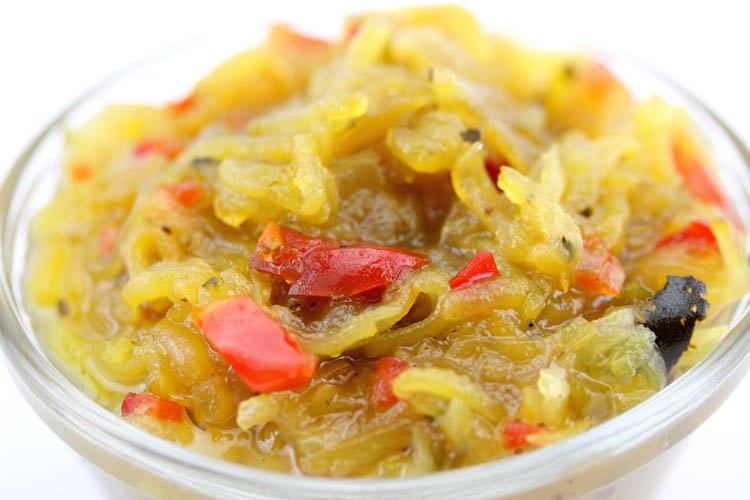
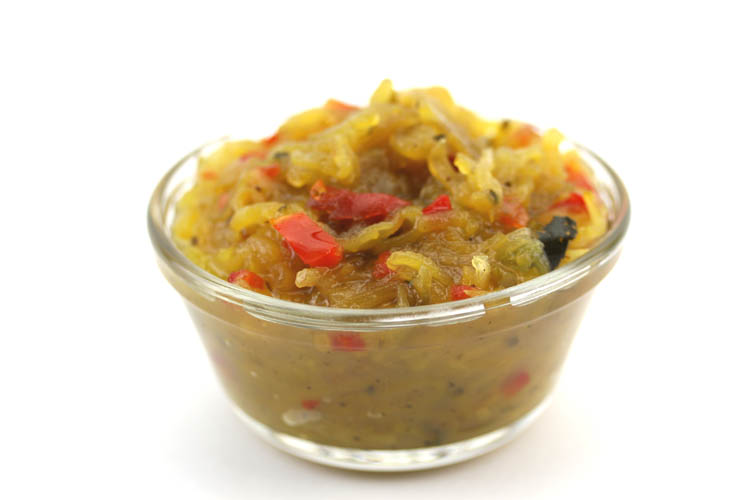
Above pixs taken on
04-23-13 of the last large batch my bride and myself did on June 20 and 21,
2009 and it is still preserved! Sample tasted it to be certain and it
is still fantastic.
Note: Leave
a little of the peeling on the zucchini squash in several places to give the
relish additional color.
This is Mickey Porter's favorite relish. "Tweet" does me right.
If Justin Wilson was alive and had a chance
to sample this relish, I guarantee you he would say, "You could put this
relish on pine bark and make it taste good." Some of our friends
and relatives will eat it as you would a dessert. Several years back,
my bride Joyce aka Tweet, canned 120 pints of this stuff and we are
down to the last one or two. One word of caution, some zucchini plants
are what we call a rogue plant of which the zucchini taste
bitter as quinine, therefore, taste each peeled zucchini squash before you
grate it.....my bride learned this the hard way and had to throw out a batch
of 8 pints. This relish will take a hot dog and burger to another
level and goes very well with a side of slow cooked dried beans, etc.
Recipe from Aline Mosteller, Adcock Family
Traditions Cookbook 1997. It is to my understanding a lady in
Hayesville, NC had the original recipe and would sell canned jars of this
relish to help raise money for the local Church.
Pix below
of Roy and Aline Mosteller taken in 2007:
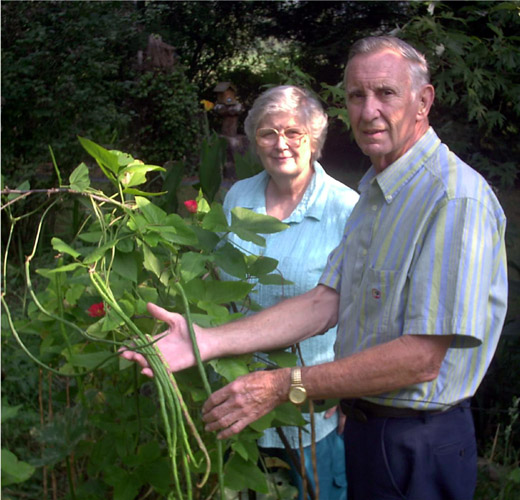
Some humongous
Mountain grown beans in their flower garden spot!
Below sequence pixs
taken on June 20 and 21st, 2009 while doing a few double batches of the
zucchini relish. Click on thumbnails for a larger view: We canned a total of 73 pints this season!
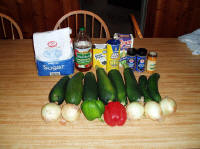
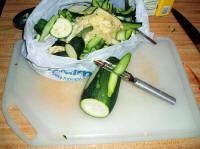
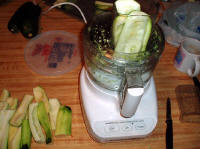
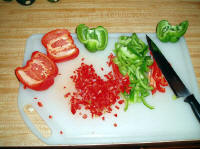

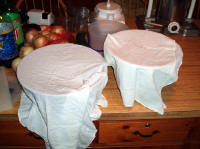
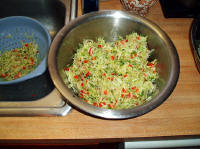
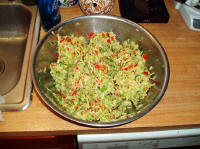
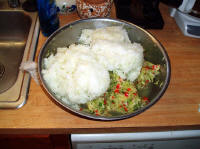
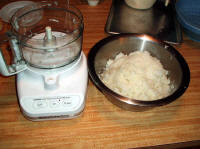
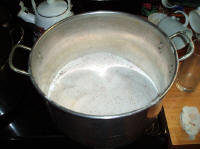
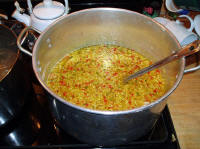
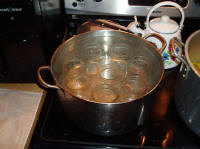
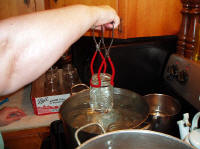
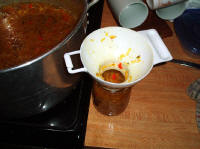
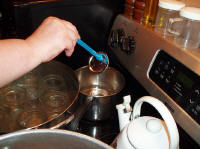
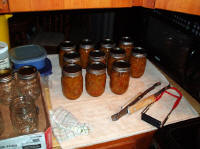
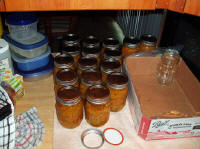
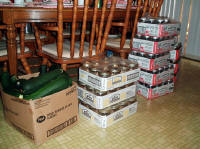
Anyone that does canning today certainly has a greater appreciation and
respect for their Mothers and Grandmothers who did canning out of necessity,
whereas some of us today do it more as a matter of tradition and a labor of
love. Imagine the labor and effort it would take to preserve and can
food and meat items the traditional way before refrigerators, food
processors, electric grinders and of course air conditioning and central
heat. Even with all the modern appliances and kitchen gadgets of
today and of course air conditioning in the summer months, recipes
such as this zucchini relish is definitely a Labor of Love!
Bill aka Mickey Porter 06-21-09.
ADDITIONAL NOTES: Several have asked about the water
bath canning method used for the zucchini relish versus pressure canning and
I assure you this method is safe with this recipe since cooked in a vinegar
mixture prior to the water bath sterilizing the jars and lids. However, canning
vegetables that have low acidic content (high ph) will require pressure canning
instead of a water bath and the same goes for any type of meats canned. The
pressure canner we currently use is one made by
Mirro
and is 12 quart
model capable of canning 13 half pints, 10 pints, and 5 quarts and the
petcock weight has a 5 , 10 and 15 lbs. pressure setting. There are
plenty of information concerning canning available on cyberspace (internet)
and we have an old Ball and/or Mason canning book which is pretty much
generic and highly recommend some research if you don't have any experience
canning OJT (On the job training) as provided by your Mother and Grand Mother! I will insert a link
to the University of Georgia that is a good starting place for canning
information. Your local county farm extension agency is a good
resource for information on canning. The beauty and safety of pressure
canning is the internal temperature is raised to 240 degrees F. which kills
the botulism spores and a water bath at 212 degrees F. cannot do that.
Check this
link
out for pressure canning information.
Updated pixs added on 04-23-13 by Bill aka Mickey Porter
